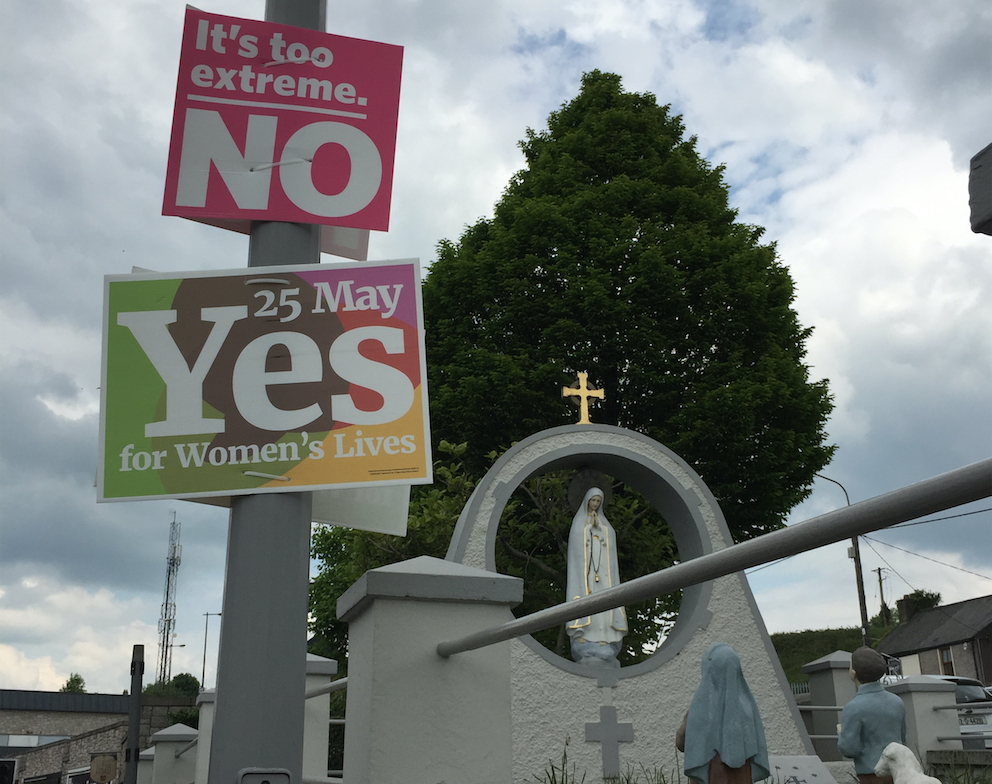Ireland’s faith once sustained the Church in LA. A recent abortion vote shows how much the country has changed
Growing up in the waning days of Catholic triumphalism and when the only “native” priests of the Archdiocese of Los Angeles seemed to come from places called Kerry, Cork or Donegal, it is easy to understand the melancholia I feel in the aftermath of the abortion vote in Ireland.
Even though my brothers and sisters and I were multiple generations removed from the “Holy Land,” we were thoroughly enculturated into the Irish American experience … for good and ill. We listened to the Clancy Brothers and Tommy Makem, and when John Ford’s “The Quiet Man” came on TV it became a family event.
We relished in the history of misfortune and oppression from the safe distance of middle-class America of the 1960s. It was easy to be a “rebel” in the Valley. When I was in my early 20s and flush with wanderlust and the means by which to satisfy it, my first destination was Ireland. Like all travel, it was a learning experience.
What I learned first was, although I looked like a lot of the people I saw walking up and down O’Connell Street in Dublin, I never felt more American in my life. And when I went into a church wherever I roamed in Ireland, I never felt more like a Catholic.
That was a long time ago and Ireland, like the rest of Europe, is home to countless beautiful architectural cultural icons whose pews are empty now.
For hundreds, yes hundreds of years, Ireland, as they used to say, was under the loving and tender care of the British Empire. The record of brutality is mind-numbing. Systematic economic oppression, systematic religious and cultural oppression and then heavily seasoned with mass starvation in the 1840s.
Through all the attempts to snuff out the Catholic faith in Ireland, the Church grew stronger and the people more faithful … even if their own social pathologies traveled on a wayward path — see New York City in the middle part of the 19th century.
By the time Ireland formerly became a “free state,” after World War II, the Church was ready to flower into the light of day unencumbered by any anti-Catholic British mandate. For a time, it did just that.
For decades, packed seminaries exported priests and religious men and women on a massive scale all over the world. A major destination for them was the United States. The Archdiocese of Los Angeles was a beneficiary of this migration, where throughout the second half of the 20th century the presence of Irish priests and Irish nuns was just taken for granted.
Many years after its independence, Ireland remained almost as dreadfully poor as it had been under the thumb of the British Empire. But in the 1990s that all changed. Ireland modernized its economic model, and during the first five years of that decade saw its economy sustain a growth rate of more than 5 percent.
In the next five years the economy grew at an outstanding 9 percent. By the early 2000s, Ireland’s GDP had surpassed that of Britain and Germany. At the height of the “Celtic Tiger” economic boom, Ireland had gone from one of the poorest countries in Europe to the wealthiest.
The Church always seems to do better when the culture applies negative pressure to it — whether that manifests itself into becoming lion food for popular entertainment, or secretly attending a Mass behind a shrubbery where being found out meant death to the priest and probably a not so happy ending for the congregation.
During hundreds of years of oppression and persecution, the Church in Ireland faithfully endured and prospered. In less than a hundred years, the seminaries are empty, scandals persist and a referendum on a pro-life constitutional amendment was overturned with a substantial majority.
If there was an analogous event in the United States and a constitutional amendment was presented to protect unborn human life, it would be voted down with probably an even greater majority of the general American public. It would also be a no vote with a majority of Catholic voters as well.
So even though the Ireland of our dreams most assuredly never was, the Ireland that did exist is now gone.
The Emerald Isle has taken her place among the other European states that used to have decidedly Catholic natures but have opted to jettison them as well. Europe rejoices in its victory … the Church weeps.
Interested in more? Subscribe to Angelus News to get daily articles sent to your inbox.

